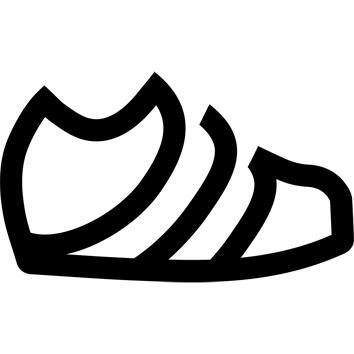How to choose a ski touring boot?
Choose your ski touring boots according to your needs.
It's a compromise between downhill performance (support/stiffness) and uphill comfort (lightness/deflection)
For multi-purpose boots (freeride, freerando or even multi-purpose piste boots), 4 hooks offer more support and precision.
For resort and mountain use, 2 hooks are more appropriate and provide lightness and easier deflection.
Liner comfort
Thanks to its precise adjustment system (Boa ®), the shoe can accommodate medium to large feet.
Its thermoshape liner also enhances comfort inside the shoe.
We also recommend adjusting your liner with the laces (sold with it) to limit friction and blister formation.
Shoe adjustment system
The Boa® system allows easy, fast and ultra-precise customization of the shoe.
Lacing pulleys and sliding eyelets allow easy adjustment from instep to toe, ensuring perfect adaptation of the shell to the foot's anatomy.
The 45mm Velcro strap provides good support for the tibia and excellent tibial support transfer on descents.
What is Resort Touring
Resort Touring is our definition of ski touring in ski resorts.
Use the tracks and itineraries marked out by the ski resorts for the ascent and come back down to the ski slopes with ease.
This practice allows the discovery of ski touring and the knowledge of the technical bases of this sport.
It is also appreciated by sportsmen who want a training track or a defined itinerary to progress easily.
What is Mountain Touring
Mountain Touring is our definition of ski touring in the mountains.
Make your own tracks, create your own ascent itinerary far from the ski resorts.
Descend where the snow seems best and the slope least exposed to avalanche risk.
Authentic ski touring.
You evolve in a wild mountain environment, you must master your movements, prepare your outings and know your avalanche safety equipment.
Don't go out alone.
Shoe outsole length
23.5 = 256mm
24.5 = 266mm
25.5 = 276mm
26.5 = 286mm
27.5 = 296mm
28.5 = 306mm
29.5 = 316mm
30.5 = 326mm





